Welcome to the mesmerizing world of Amazon Sword plants (Echinodorus grisebachii)! These magnificent Sword plants have enthralled aquarium enthusiasts with their striking beauty and impressive stature.
With their vibrant green leaves and sword-like shape, Amazon Sword plants add a touch of natural elegance to any aquatic setting. In this comprehensive guide, we will delve into the captivating realm of Amazon Sword plants, exploring their appearance, optimal care techniques, and effective propagation methods. Join us on this exciting journey as we unlock the secrets to cultivating and nurturing these remarkable Sword plants.
Table of Contents
About The Amazon Sword Plant
The Amazon Sword plant (Echinodorus grisebachii) originates from South America’s Amazon River basin. With its long, vibrant green leaves and rapid growth, it serves as an excellent background plant in aquariums. This versatile species adapts well to various aquatic environments and offers functional benefits such as oxygenation, shelter for aquatic life, and nutrient absorption.
Maintaining optimal growth requires nutrient-rich substrate, moderate to high lighting, and regular pruning. Whether you’re a beginner or experienced hobbyist, the Amazon Sword plant’s captivating appearance and adaptability make it a popular choice for creating a lush and visually appealing underwater landscape. 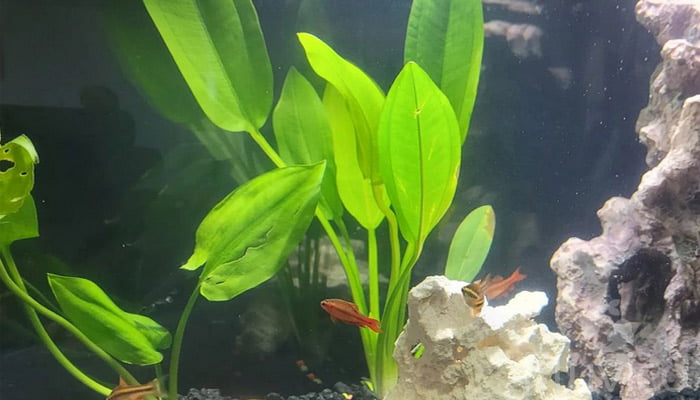
Appearance
The Amazon Sword plant displays long, lanceolate-shaped leaves that can grow up to 20 inches or more in length. The leaves are vibrant green in color and resemble the shape of a sword, hence the plant’s name.
With its robust growth, the Sword plant creates a dense and visually striking presence in aquariums, adding depth and beauty to the underwater landscape.
Background Plant
The Amazon Sword plant is commonly used as a background plant in aquariums. Its tall and bushy growth habit makes it an ideal choice for filling the back portion of the tank. With its lush foliage and impressive size, the Amazon Sword plant creates a stunning backdrop, adding depth and visual appeal to the overall aquascape.
Its dense growth also provides shelter and hiding spots for fish, making it a functional and aesthetically pleasing addition to any aquarium.
Related: View our latest Aquarium Plant Guides Here!
Benefits and Drawbacks
Benefits:
- Creates a lush and visually appealing backdrop in the aquarium
- Adds depth and dimension to the overall aquascape
- Provides natural hiding spots and shelter for fish and other aquatic inhabitants
- Helps to oxygenate the water and maintain a healthy aquatic ecosystem
- Absorbs excess nutrients, contributing to the natural biological filtration of the aquarium
Drawbacks:
- Can grow large and may require regular pruning to maintain desired size and shape
- Requires moderate to high lighting and nutrient-rich substrate for optimal growth
- May out-compete smaller, delicate plants for light and nutrients if not properly managed
- Can be demanding in terms of care and maintenance compared to some other aquarium plants
It’s important to consider these factors when deciding to include the Amazon Sword plant as a background plant in your aquarium. 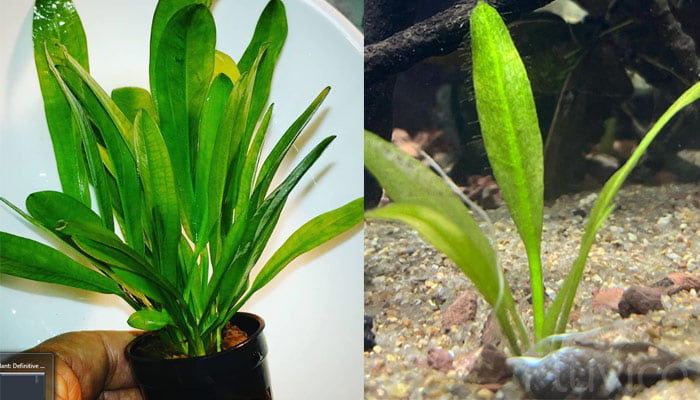
Types of Amazon Sword Plants
When it comes to types of Amazon Sword plants (Echinodorus species), there are several varieties available. Here are some popular types:
- Echinodorus Amazonicus: Also known as Amazon Sword or Amazon Sword Plant, this is the most common and widely available variety. It features long, broad leaves with a vibrant green coloration.
- Echinodorus Bleheri: Commonly known as Bleher’s Sword, it has long and narrow leaves that form a dense rosette. The leaves are usually green, but some variations may have reddish or bronze hues.
- Echinodorus Angustifolius: This variety is characterized by its narrow, lanceolate-shaped leaves. It is often chosen for its unique and elegant appearance, adding a touch of sophistication to the aquarium.
- Echinodorus Ocelot: The Ocelot Sword plant stands out with its distinctive mottled leaf pattern. The leaves have a green base color with reddish-brown spots or blotches, resembling the fur of an ocelot.
- Echinodorus Martii: Also known as Ruffled Amazon Sword, this variety has wavy and ruffled leaves, giving it a unique and attractive texture. The leaves range in color from light green to dark green.
These are just a few examples of the diverse range of Amazon Sword plant varieties available. Each type offers its own aesthetic appeal and growth characteristics, allowing aquarists to choose the one that best suits their preferences and aquarium setup.
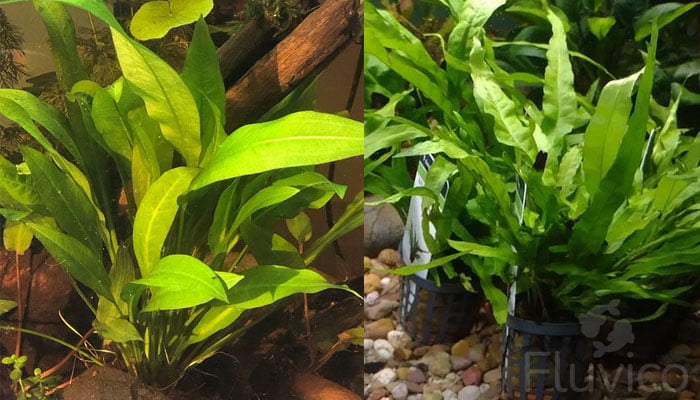
Amazon Sword vs Java Fern
When comparing the Amazon Sword plant and Java Fern, each possesses unique characteristics and offers distinct advantages in aquarium setups.
The Amazon Sword plant boasts fast growth and impressive size, making it ideal as a background or centerpiece plant. With its long, sword-like leaves and vibrant green coloration, it adds a lush and visually striking element to aquariums.
On the other hand, Java Fern grows at a slower pace, making it suitable for smaller tanks or as a midground or foreground plant. Its feathery leaves come in various shapes and can be attached to driftwood or rocks.
While the Amazon Sword requires moderate to high lighting and nutrient-rich substrate, Java Fern is more versatile and can tolerate low light conditions. Ultimately, the choice between the two depends on your desired aesthetics, available space, and specific aquarium requirements.
Amazon Sword Plant Growth Rate
The growth rate of Amazon Sword plants is relatively fast compared to many other aquarium plants. With proper care and optimal conditions, they can exhibit vigorous growth and reach impressive sizes.
The exact growth rate can vary depending on factors such as lighting, nutrient availability, and overall tank conditions. Regular pruning may be necessary to manage their growth and prevent overcrowding in the aquarium. It’s important to consider their growth potential when planning the layout and maintenance of your aquatic ecosystem. 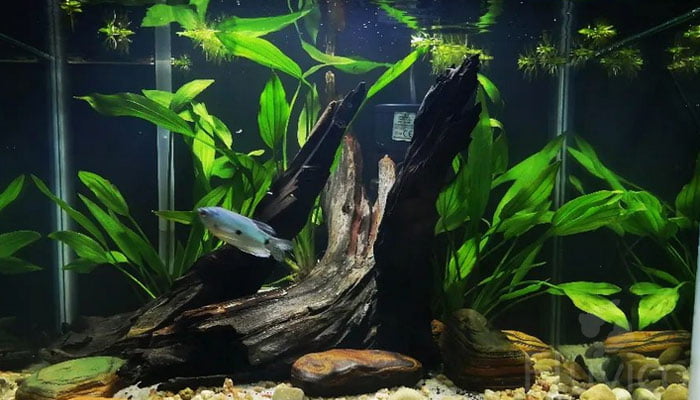
How To Plant Amazon Swords
To successfully plant Amazon Sword plants in your aquarium, follow these steps:
Planting An Amazon Sword Plant
- Choose a suitable substrate: Amazon Swords prefer nutrient-rich substrates like aquarium soil or plant-specific substrates.
- Prepare the plant: Gently remove the plant from its pot and carefully separate any tangled roots.
- Dig a hole: Create a hole in the substrate deep enough to accommodate the plant’s roots.
- Place the plant: Lower the plant into the hole, ensuring the roots are spread out and covered with substrate.
- Firmly secure: Gently press the substrate around the base of the plant to hold it securely in place.
Ensuring Optimal Growth Conditions
- Lighting: Provide moderate to high-intensity lighting to support healthy growth. LED lights or full-spectrum bulbs are recommended.
- Temperature: Maintain a temperature range of 72-82°F (22-28°C) for optimal growth.
- pH Level: Amazon Swords thrive in slightly acidic to neutral water, ideally around pH 6.5-7.5.
- Water Hardness: They prefer a moderate to high water hardness level, typically around 4-15 dGH.
- Nutrient Supply: Use a comprehensive liquid fertilizer or root tabs to provide essential nutrients like iron, potassium, and micronutrients.
Adding Amazon Swords to Your Aquarium
- Placement: Consider the plant’s size when deciding where to position it in the aquarium. Place larger specimens towards the back to create a stunning background.
- Spacing: Leave enough space between plants to allow for proper growth and prevent overcrowding.
- Maintenance: Regularly trim any yellow or decaying leaves and remove any algae growth to maintain the plant’s health and appearance.
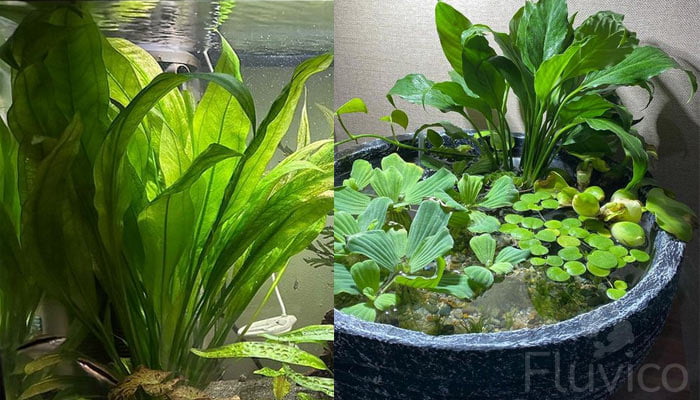
Caring for Amazon Sword Plants
To ensure the health and vitality of your Amazon Sword plants, follow these care guidelines:
Tank Requirements
- Provide a spacious tank with a capacity of 20 gallons or more to accommodate their growth.
- Maintain a temperature of 72-82°F (22-28°C) and a pH level of 6.5-7.5.
- Ensure moderate to high lighting and a nutrient-rich substrate.
Maintenance
- Regularly trim any yellowing or decaying leaves to maintain plant health.
- Monitor and adjust water parameters as needed, including pH, temperature, and water hardness.
- Conduct regular water changes to prevent the buildup of excess nutrients.
Care Tips
- Fertilize regularly with a comprehensive liquid fertilizer or root tabs to provide essential nutrients.
- Supplement with iron-based fertilizers to prevent iron deficiency and promote vibrant leaf coloration.
- Consider adding CO2 supplementation for faster growth and improved overall health.
Taking Care of Your Amazon Swords
- Check for any signs of nutrient deficiencies, such as yellowing leaves or slow growth, and address them promptly.
- Provide sufficient space between plants to prevent overcrowding and competition for resources.
- Regularly remove any algae growth on the leaves to maintain their appearance.
Leaves Turning Yellow, Cracking, Tearing & Algae
- Yellowing leaves may indicate nutrient deficiencies or poor water conditions. Adjust fertilization and water parameters accordingly.
- Cracking or tearing of leaves can be caused by physical damage or nutrient imbalances. Avoid rough handling and ensure proper nutrient supply.
- Algae growth on leaves is common but can be managed by maintaining proper water parameters, light intensity, and nutrient balance.
Algae Growth On Leaves, Removal and Prevention
- Gently wipe the affected leaves with a soft cloth or algae scraper during routine maintenance to physically remove algae.
- Introduce algae-eating organisms, such as snails or certain species of fish (e.g., Siamese algae eaters or Otocinclus), to help control and consume algae.

How To Propagate An Amazon Sword Plant
How to Reproduce
Amazon Sword plants can reproduce through sexual and asexual methods. Sexual reproduction occurs when the plant produces flowers and seeds, while asexual reproduction involves the growth of new plant-lets from the mother plant.
How to Propagate:
- Identify healthy and mature Amazon Sword plants with multiple leaves.
- Locate the plantlets or small daughter plants that have grown around the base of the mother plant.
- Carefully separate the plantlets from the mother plant, ensuring that each one has its own root system intact.
- Plant the separated plantlets in suitable substrates or pots, providing them with appropriate lighting, temperature, and water conditions.
- Continue to care for the propagated plantlets as you would with mature Amazon Sword plants, ensuring adequate nutrients and maintenance.

Amazon Sword Tank Mates and Compatibility
Amazon Sword plants are known to be compatible with a wide range of aquatic species, making them excellent choices for community aquariums. When selecting tank mates for Amazon Sword plants, it’s essential to consider factors such as size, temperament, and water parameters. Here are some popular and compatible tank mates:
- Tetras (Neon, Cardinal, Rummy Nose)
- Gouramis (Dwarf Gourami, Pearl Gourami)
- Corydoras Catfish (Bronze Corydoras, Peppered Corydoras)
- Livebearers (Guppies, Platies, Swordtails)
- Angelfish
- Bristlenose Plecos
- Rasboras (Harlequin, Chili, Galaxy)
- Harlequin Rasboras
- Otocinclus Catfish
These species generally share similar water temperature, pH, and dietary requirements with Amazon Sword plants, creating a harmonious and balanced aquatic environment. However, always research the specific needs and compatibility of each species before introducing them to your tank to ensure a successful and thriving community.
Related: View our latest Aquarium Plant Guides Here!
Buying An Amazon Sword Plant
When buying an Amazon Sword plant (Echinodorus grisebachii), there are a few things to keep in mind to ensure you choose a healthy and thriving specimen:
- Reputable Sources: Purchase from reputable aquarium stores, nurseries, or online retailers known for their quality plants. This helps ensure you are getting a healthy and well-cared-for Amazon Sword plant.
- Visual Inspection: Examine the plant for any signs of damage, discoloration, or pests. Choose a plant with vibrant green leaves and without yellowing, browning, or wilting. Avoid plants with torn or damaged leaves, as they may indicate poor health.
- Root System: Check the roots of the plant. They should be well-developed, white or light-colored, and free from rot or decay. Avoid plants with mushy or brown roots.
- Plant Size: Consider the size of the plant in relation to your aquarium. Choose a specimen that is appropriate for your tank size and desired layout.
- Plant Packaging: If purchasing online, ensure the plant is packaged properly to prevent damage during shipping. Look for sellers who provide secure packaging and offer guarantees for plant health upon arrival.
By being selective and choosing a healthy Amazon Sword plant from a reputable source, you increase the chances of successful acclimation and long-term growth in your aquarium.
Are Amazon Sword Suitable For Your Aquarium? (Summary)
The growth rate of Amazon Sword plants (Echinodorus grisebachii) is relatively fast compared to many other aquarium plants. With proper care and optimal conditions, they can exhibit vigorous growth and reach impressive sizes.
The exact growth rate can vary depending on factors such as lighting, nutrient availability, and overall tank conditions. Regular pruning may be necessary to manage their growth and prevent overcrowding in the aquarium. It’s important to consider their growth potential when planning the layout and maintenance of your aquatic ecosystem.
FAQ
Is amazon sword easy to grow?
Yes, the Amazon Sword plant is an easy-to-grow plant, making it suitable for beginners. With proper care and maintenance, it can thrive in aquariums, adding beauty to your aquatic setup.
Do Amazon swords need a lot of light?
Yes, Amazon Sword plants require moderate to high lighting for optimal growth. Providing sufficient light helps promote healthy leaf development and overall plant vitality in the aquarium.
Can amazon sword grow in gravel?
Yes, Amazon Sword plants can grow in gravel substrate. However, it’s important to supplement the gravel with root tabs or liquid fertilizers to provide essential nutrients for their growth and development.
Is amazon sword safe for turtles?
No, Amazon Sword plants are not safe for turtles. Turtles may nibble on the leaves, which can cause digestive issues. It’s best to choose turtle-safe plants for their habitat.
why is my amazon sword turning transparent?
Transparent leaves on an Amazon Sword plant may indicate a nutrient deficiency, specifically a lack of iron. Consider adding an iron supplement or adjusting the fertilization to address the issue.
More Reading

15 Types of Cryptocoryne: Which is Best For Your Aquarium Setup?

16 Awesome Low Light Aquarium Plants (Mosses, Ferns & Stem Plants)


18 Types of Aquarium Moss: Photos, Care, Propagation & Growth Guide
Table of Contents


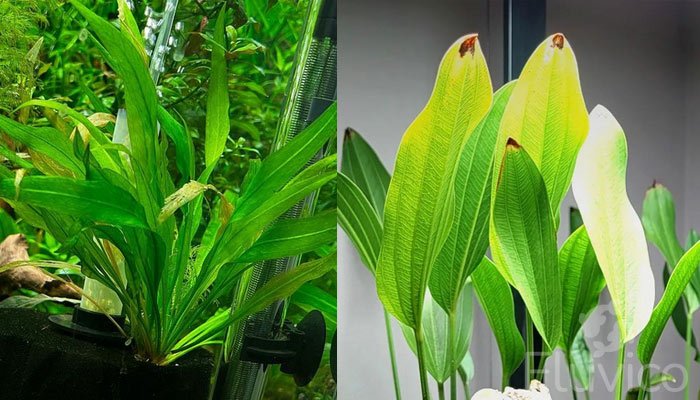
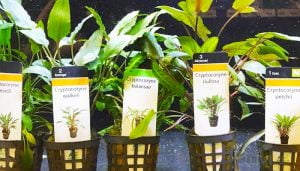
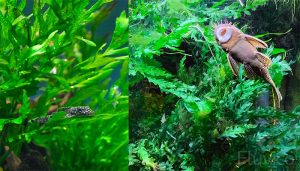
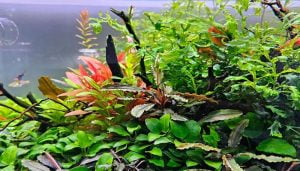

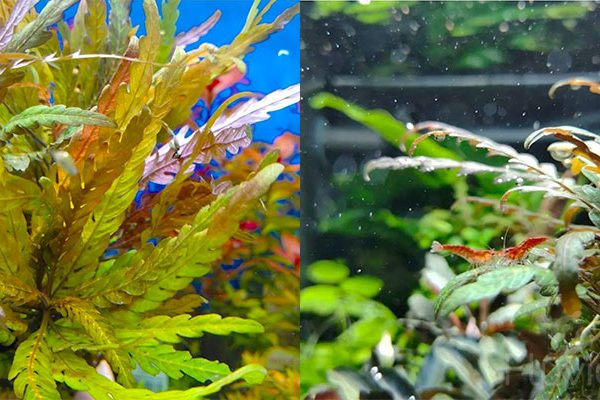
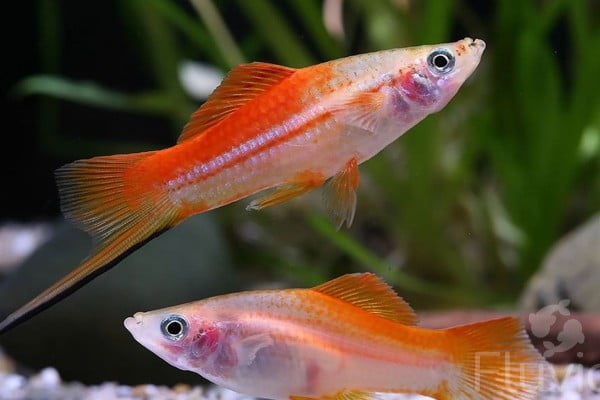
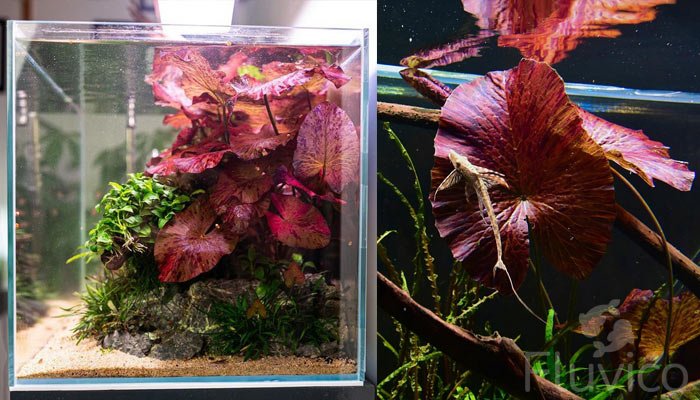
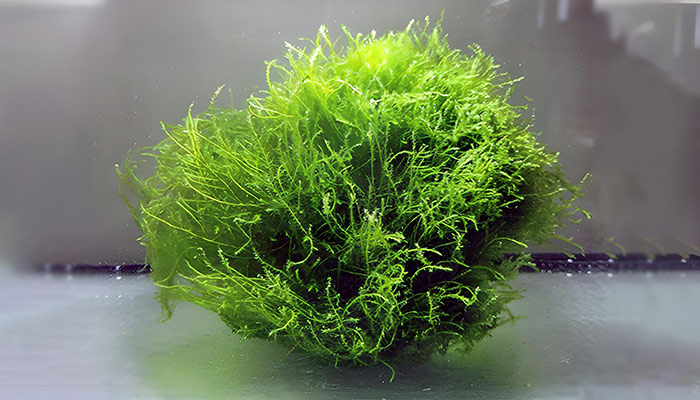
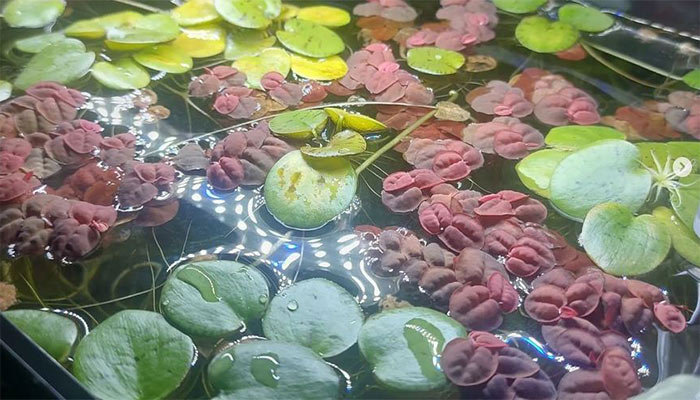
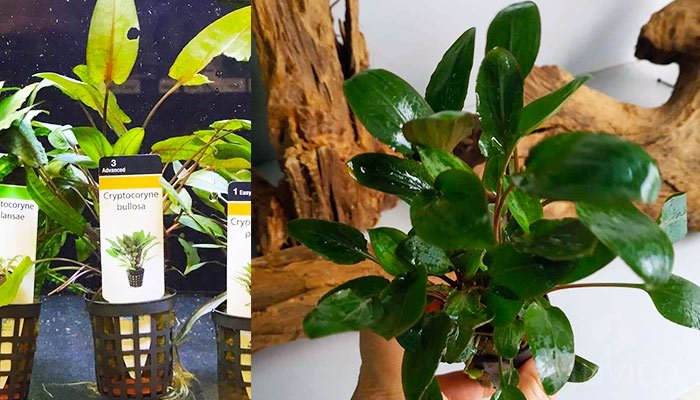
Hope you enjoyed our Amazon Sword Plant Care Guide! As always if you have any questions or tips of your own, comment below.
All the best,
Charlie